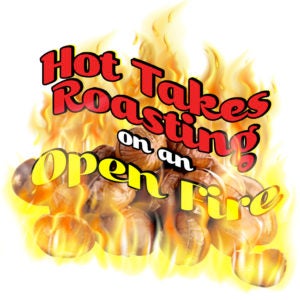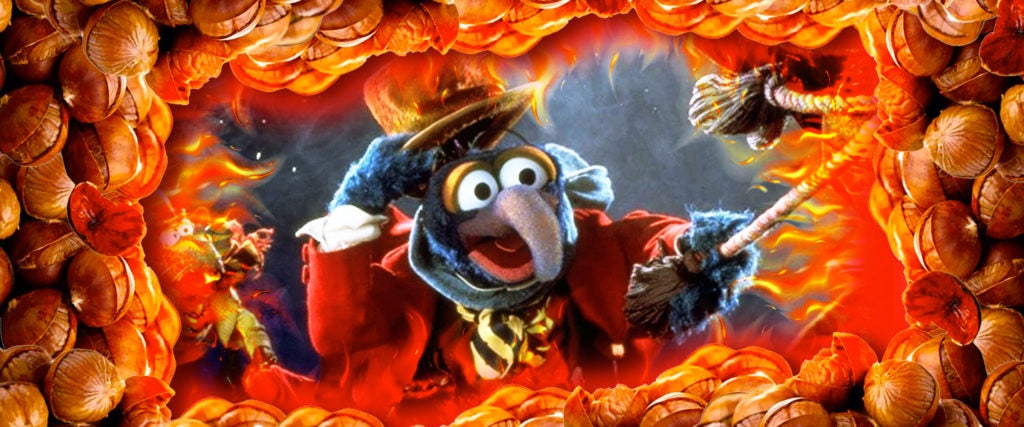 Oh, you thought our Thanksgiving op-eds were bad? Gird your stockings for the least wonderful time of the year, when the merry gentlepeople of MEL attempt to outdo one another with the most heinous holiday takes we can unwrap. We can already feel the angry tweets nipping at our noses.
Oh, you thought our Thanksgiving op-eds were bad? Gird your stockings for the least wonderful time of the year, when the merry gentlepeople of MEL attempt to outdo one another with the most heinous holiday takes we can unwrap. We can already feel the angry tweets nipping at our noses.
There are a lot of adaptations of A Christmas Carol. Like, if you take a look on Wikipedia, there are hundreds of them. Some of them are serious, straightforward retellings, like the ones starring Patrick Stewart, George C. Scott, etc. Then there are offbeat ones, like Scrooged and Mister Magoo’s Christmas Carol. Which one is “best” just comes down to a matter of taste, but as for which telling is the most faithful rendering of the original, 1843 novel by Charles Dickens, well, that distinction can only belong to one adaptation, and it happens to be the movie featuring singing and dancing frogs, pigs and bears.
The 1992 classic The Muppet Christmas Carol was the first Muppets theatrical film since the death of the visionary Jim Henson. It was directed by his son, Brian Henson, the screenplay was adapted by longtime Muppets writer Jerry Juhl and it starred Michael Caine as Ebenezer Scrooge. For the supporting cast, it was rounded out by the likes of Kermit the Frog as Bob Cratchit, his nephew Robin as Tiny Tim and Fozzie Bear as the similarly named Fezziwig. Most importantly though, the movie features Gonzo as author Charles Dickens, and it’s thanks to Gonzo’s presence that The Muppet Christmas Carol is the closest to Dickens’ original novel.
If you’ve never read Charles Dickens’ A Christmas Carol, the book is tiny, often running less than 100 pages, so it’s fairly easy for films to adapt it without leaving too much out. There’s also a good amount of dialogue, so, when doing a Scrooge adaptation, it’s par for the course that a lot of that original dialogue makes it through. For example, when the ghost of Jacob Marley visits Scrooge, Scrooge, at first, refuses to believe it, saying that Marley’s ghost could simply be a hallucination due to “a bit of undigested beef.” In what was probably hilarious back in 1843, Scrooge quips that, “There’s more of gravy than of grave about you!” to the spectre. This joke is said by Caine’s Scrooge, as it is by Patrick Stewart’s, George C. Scott’s and Alistair Sim’s (I note these three in particular because they’re often — wrongfully — cited as the most accurate adaptations).
But while the Dickens dialogue usually makes it through on straightforward retellings, the prose of Charles Dickens is usually left out entirely. Enter Gonzo, or, more accurately, Gonzo as the great wordsmith Charles Dickens. In the Muppets’ version, Gonzo is the omniscient narrator who is sometimes played for laughs, but just as often is reciting Dickens’ prose almost word-for-word.
Consider how A Christmas Carol opens. Dickens begins by saying, “Marley was dead to begin with.” It’s a blunt, memorable opening line which is altered only slightly by Gonzo the Great. “The Marleys were dead to begin with,” Gonzo says as he kicks off the story. The slight change is due to the fact that the ghost of Marley is replaced by two ghosts, the two old guys from the balcony in The Muppet Show, Statler and Waldorf. While two Marleys isn’t faithful to Dickens, their combined presence expertly fills the ominous yet familiar presence of Scrooge’s deceased business partner, Jacob Marley.
There’s also Dickens’ characterization of Scrooge: “He was a tight-fisted hand at the grindstone, Scrooge! A squeezing, wrenching, grasping, scraping, clutching, covetous, old sinner!” Gonzo says much the same, leaving out only the word “scraping” from his description. Later on, after Scrooge sees the face of Marley in his door knocker, Gonzo narrates, “To say that Scrooge was not startled would be untrue,” which is nearly verbatim from the novel, as is when Gonzo comments, “Darkness was cheap, and Scrooge liked it.”
But the presence of Gonzo as Charles Dickens doesn’t just allow for near-exact recitations, it also properly portrays the feeling with which Dickens peppers his masterpiece. Dickens isn’t just his spooky, descriptive self in the book — his tone is also punchy and funny and even conversational with the reader. Right at the beginning, after Dickens says that Marley is dead, he goes on a really funny little tangent: “Old Marley was as dead as a door-nail. Mind! I don’t mean to say that I know, of my own knowledge, what there is particularly dead about a door-nail. I might have been inclined, myself, to regard a coffin-nail as the deadest piece of ironmongery in the trade. But the wisdom of our ancestors is in the simile; and my unhallowed hands shall not disturb it, or the country’s done for. You will therefore permit me to repeat, emphatically, that Marley was as dead as a door-nail.”
As for Gonzo, though he doesn’t go down that same little linguistic rabbit-hole, he achieves the same conversational tone by the use of his sidekick, Rizzo the Rat, who just plays himself, or, more appropriately, Rizzo plays us so that Gonzo can pal around with him as he tells the story of Scrooge. It’s a unique device that nicely echoes Dickens’ colloquial intent.
One of Dickens’ funniest lines also plays out perfectly in the film, so much so that when I first read the novel, I was downright shocked that the gag didn’t come straight from the Muppets (as, like most people, I’d seen the movie before reading the book). At the very end of the story, Dickens’ sum-up reads, “Scrooge was better than his word. He did it all, and infinitely more; and to Tiny Tim — who did not die — he was a second father.” Tiny Tim, one of the sweetest, most sympathetic characters in all of literature, gets a blunt, funny sendoff by Dickens simply telling us “he did not die” — hilarious. Gonzo, of course, delivers this line like the comedic pro he’s been since the 1970s.
As for the way the characters are portrayed in the film, they’re all fairly faithful to Dickens as well. Kermit the Frog wonderfully captures the humble Bob Cratchit and his nephew Robin offers a sweet, tear-inducing take on Tiny Tim. Fozzie Bear also fits the jovial Fezziwig quite perfectly. As for the three spirits of Christmas, they are very faithful to the text, both in dialogue and appearance. Interestingly, at one point, the plan was for those three spirits to be played by classic Muppets. Gonzo, for example, was going to be the Ghost of Christmas Yet to Come and his nose was going to stick out of the hood. Fortunately, they created new puppets for those roles, which gave them their proper dramatic gravity.
Most importantly though, Michael Caine is a legend as Scrooge. He’s a bottomless void of cold, uncaring disdain in the beginning and a vision of enlightened joy by the end. Despite the fact that most of his co-stars are made of felt, Caine gives a masterclass in playing it straight, grounding the film with more gravitas than any of the other dramatic Scrooges, ultimately making the movie that much more emotionally resonant.
Plus, as one final bit of business, I’d like to point out that nowhere in Dickens’ original prose does he say that Cratchit isn’t a talking frog. Nor does he say that Cratchit’s wife isn’t a pig or that Scrooge’s old instructor wasn’t a giant blue bird, so who’s to say that portraying them as such is incorrect? Only Charles Dickens, that’s who. And he, most certainly, is dead — as dead as a door-nail.

